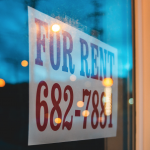Upon turning 50 last month, I left my real estate brokerage firm of 21 years. Call it a midlife crisis, but I was ready for a change—much like the rest of the world. I’ve seen a lot of change, but I suspect the biggest change is coming. Global disruptions—the Crash of 21, Bubonic Plague, World Wars, etc.—have created industrial revolutions. The next will be propelled by AI, drones, robots, self-driving cars, and now a pandemic—all of these will change our workforce forever. The effects are already evident in 3 real estate categories.
Retail
I worked in my father’s jewelry store as a young man, and about 10 years ago he shuttered the business that his father started. Retail jewelers, like other brick-and-mortar businesses based on personalized service and salesmanship, are becoming relics. Now, we browse online for reviews and inventory before our purchase is shipped home or to a local pickup site. Even before COVID, retail was going from full service to self-service, but superior locations will likely “convert to mixed uses, creating communities and thriving town centers.” CBRE Real Estate Outlook Report 2020.
Office
For most of my real estate career, I worked in class A office buildings. Our office was meant to impress clients and recruits while creating synergy. At least it was a nice (i.e., expensive) place to work. Now, office-based work is home-based, so lots of office space may become obsolete. If productivity can be achieved with reduced office overhead, then how is office space fiscally justified? Some of my colleagues are more optimistic, but I suspect office tenants will take less space as leases expire. In a recent market summary, “Tenants shed 1.14 million square foot of office space in the fourth quarter. It was the third straight quarter of negative net absorption and increased the year’s retreat to 1.7 million square foot.” Lee & Associates – Orange County 4th Quarter Report.
Industrial
Frankly, industrial real estate has not changed much, except for major institutional investments in The Amazon Effect and last-mile distribution facilities. Surprisingly, the pandemic has created only a dip in an otherwise upward trend in property values. Considering that overall vacancy has been only 4.2 percent over the last 10 years, rising values should continue.










